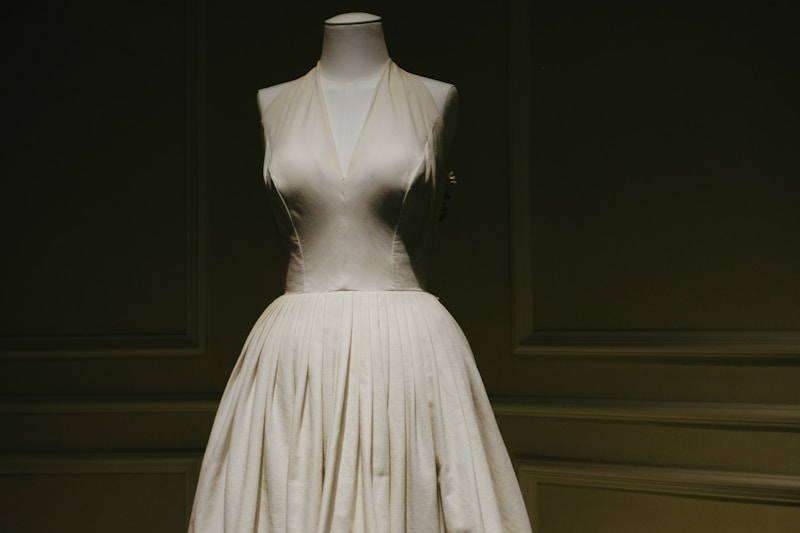Financial Priorities for Bridal Wear: Making Smart Choices for Your Special Day
Preparing for a wedding can be an exciting yet overwhelming experience, especially when it comes to budgeting for bridal wear. The cost of bridal clothing can vary significantly depending on various factors, including design, brand, and additional accessories. In this article, we will explore the financial priorities for bridal wear, helping brides-to-be navigate their choices while staying within their budget.
Understanding the Cost of Bridal Wear
Bridal wear encompasses a wide range of clothing and accessories, from the wedding dress itself to shoes, veils, and jewelry. The average cost of a wedding gown can range from $1,500 to over $5,000, depending on the designer and materials used. Understanding these costs can help in setting realistic financial priorities.
Key Components of Bridal Wear
When planning your bridal wear budget, consider the following components:
| Item | Average Cost |
| Wedding Dress | $1,500 - $5,000+ |
| Shoes | $50 - $300 |
| Veil | $100 - $500 |
| Jewelry | $100 - $2,000 |
| Alterations | $300 - $800 |
| Bridal Robe (for getting ready) | $50 - $200 |
Setting a Realistic Wedding Budget
Before diving into the world of bridal wear, it’s essential to establish a comprehensive wedding budget. Start by listing all major expenses, including venue, catering, and, of course, bridal wear. Once you have an overall budget, allocate a specific percentage to your bridal attire.
For instance, it’s common to allocate around 10% to 15% of the total wedding budget to bridal wear. If your total budget is $30,000, this means you would want to set aside $3,000 to $4,500 for your wedding dress and related attire. This allocation will guide your shopping and help you avoid overspending.
Finding the Right Dress at the Right Price
When searching for the perfect wedding dress, remember that you don't necessarily have to go for the highest-priced option. Here are some strategies to find a stunning gown while keeping your financial priorities in check:
- Sample Sales: Many bridal boutiques offer sample sales where you can get designer dresses at a significant discount.
- Online Retailers: Websites like Etsy or even major retailers often have beautiful dresses at lower price points.
- Consider Renting: For the fashion-forward bride, renting a wedding gown can be a more affordable option. Many companies provide rental services for high-end bridal wear.
- Custom Gowns: If you have a specific design in mind, consider hiring a local seamstress to create a custom gown, which can sometimes be cheaper than buying designer.
Budgeting for Accessories and Other Essentials
While the wedding dress is the focal point, don't overlook the importance of accessories. Allocate funds for shoes, veils, and jewelry as they can significantly enhance your overall look. Additionally, consider budgeting for alterations, which are often necessary to ensure a perfect fit.
Bridal Wear Accessories: Make It Count
Here are some tips for accessorizing wisely:
- Shoes: Choose a comfortable pair that you can wear after the wedding, such as stylish flats or classic heels.
- Veils: You can opt for a less expensive option or even borrow one from a friend or family member.
- Jewelry: Personalize your look with meaningful pieces, but consider borrowing rather than buying expensive items.
Popular Bridal Wear Trends
The bridal wear industry is continually evolving, with new trends emerging each season. Here are some trends to keep in mind when choosing your attire:
- Minimalism: Simple silhouettes and clean lines are gaining popularity, often at a more affordable price.
- Sustainable Fashion: Eco-friendly bridal wear made from sustainable materials is increasingly in demand, and many brands offer stylish options without a hefty price tag.
- Mix and Match: Many brides are opting for separates, which allow for greater customization and potentially lower costs.

Final Thoughts and Recommendations
Navigating the world of bridal wear can be both exciting and challenging. By setting clear financial priorities, establishing a realistic budget, and making informed choices, you can find beautiful bridal attire that fits your style and budget.
As you move forward in your wedding planning, remember these key points:
- Begin your search early to allow sufficient time for fittings and alterations.
- Be open to exploring various styles, retailers, and options.
- Don’t hesitate to consult with friends or family who have been through the wedding planning process.
- Finally, trust your instincts—choose what feels right for you on your special day.
By following these guidelines, you can confidently approach your bridal wear shopping experience, ensuring that you prioritize your finances while still achieving the wedding look of your dreams.